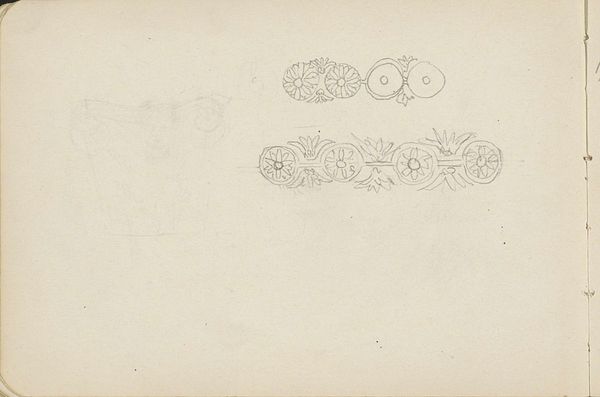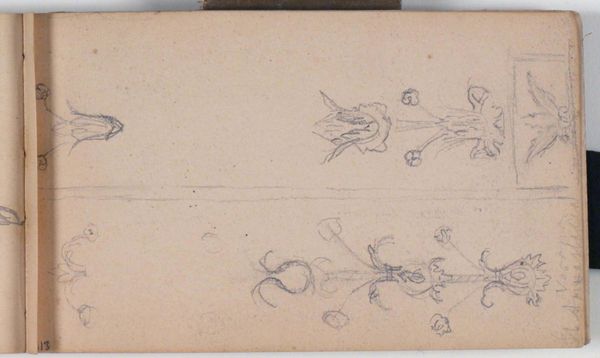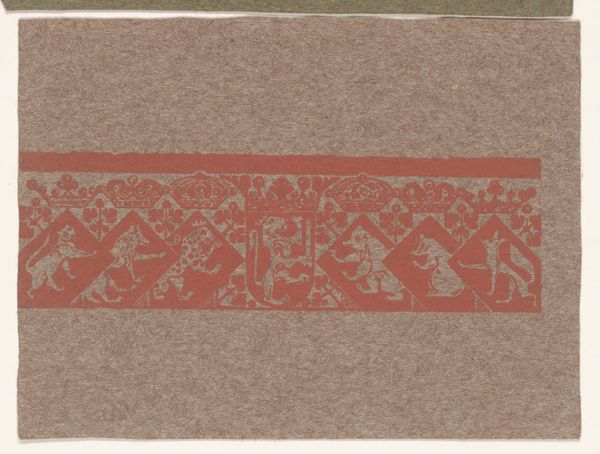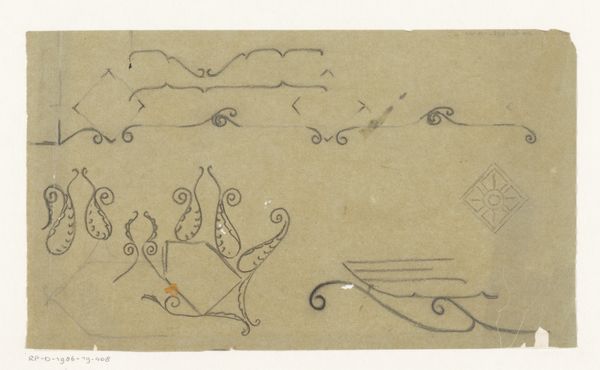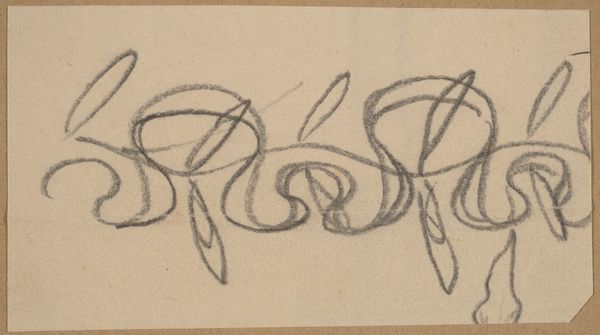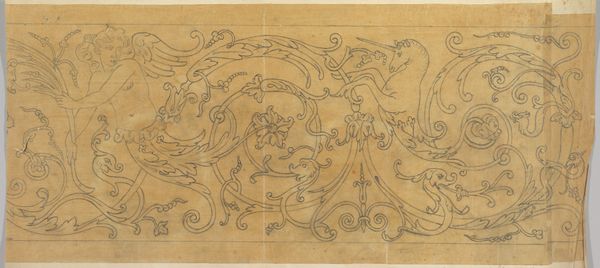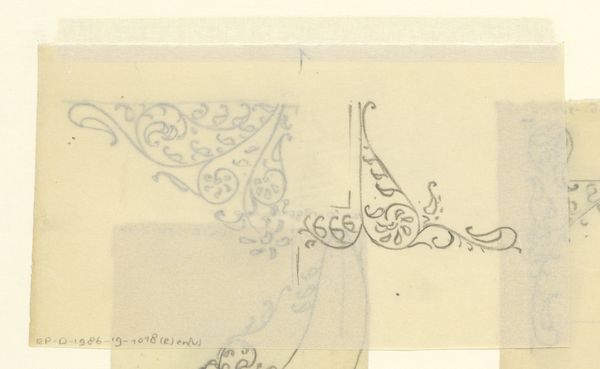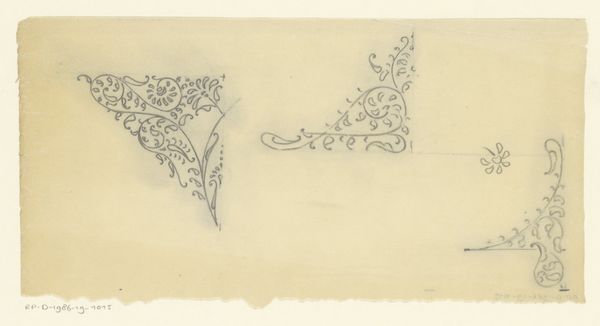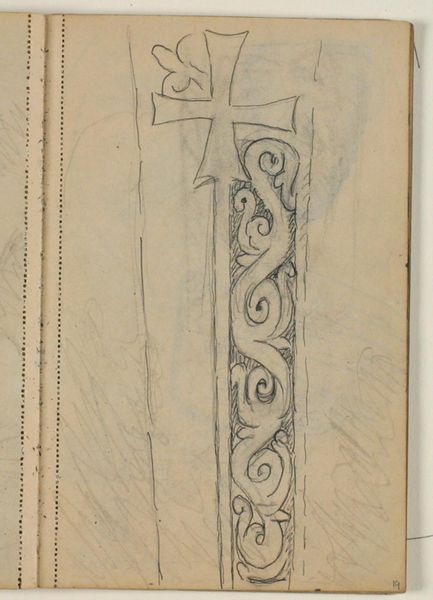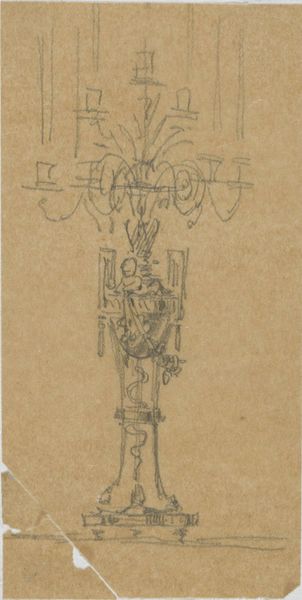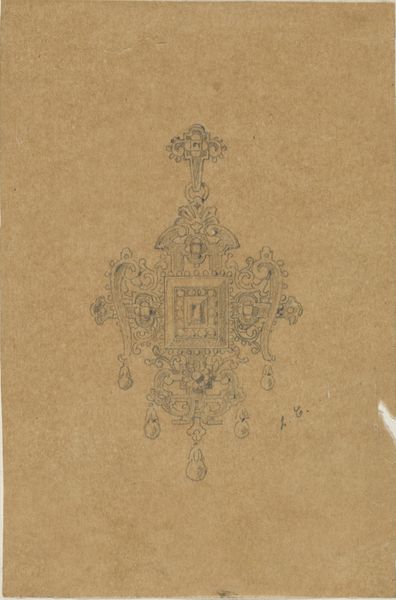
drawing, paper, pencil
#
drawing
#
toned paper
#
light pencil work
#
shading to add clarity
#
old engraving style
#
hand drawn type
#
paper
#
personal sketchbook
#
geometric
#
pencil
#
ink colored
#
line
#
sketchbook drawing
#
sketchbook art
#
initial sketch
Dimensions: height 49 mm, width 99 mm
Copyright: Rijks Museum: Open Domain
Henri Cameré’s design for a tendril frieze presents a delicate pattern drawn on a rectangular piece of paper. The design features a horizontal arrangement of stylized leaves, flowers, and tendrils forming a continuous, rhythmic motif. The subdued contrast between the faint grey lines of the drawing and the warm tan of the paper creates a subtle visual harmony. This work offers a glimpse into the structural foundations of decorative art, highlighting the importance of line and repetition. The use of natural forms, abstracted and arranged in a repeating sequence, can be seen through a structuralist lens as a coded system. Here the language of ornamentation relies on recurring motifs to create visual order and meaning. The design’s delicate, almost ethereal quality invites us to reflect on how simple elements, thoughtfully arranged, can construct complex and engaging visual narratives. Notice how the linear precision of the design suggests an underlying grid, subtly imposing order on the organic forms. This interplay between structure and nature encapsulates the essence of decorative art. It transforms the raw, untamed beauty of the natural world into a composed, human-made artifact.
Comments
No comments
Be the first to comment and join the conversation on the ultimate creative platform.
